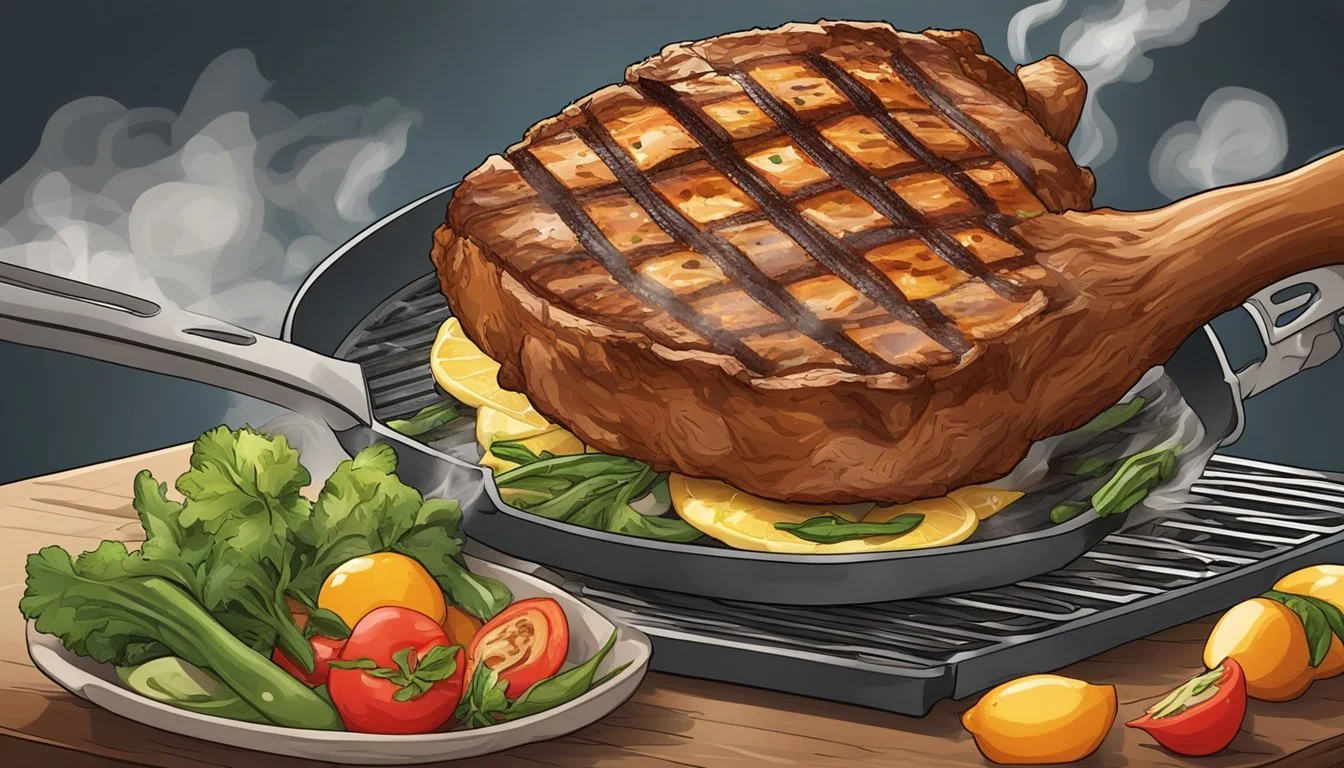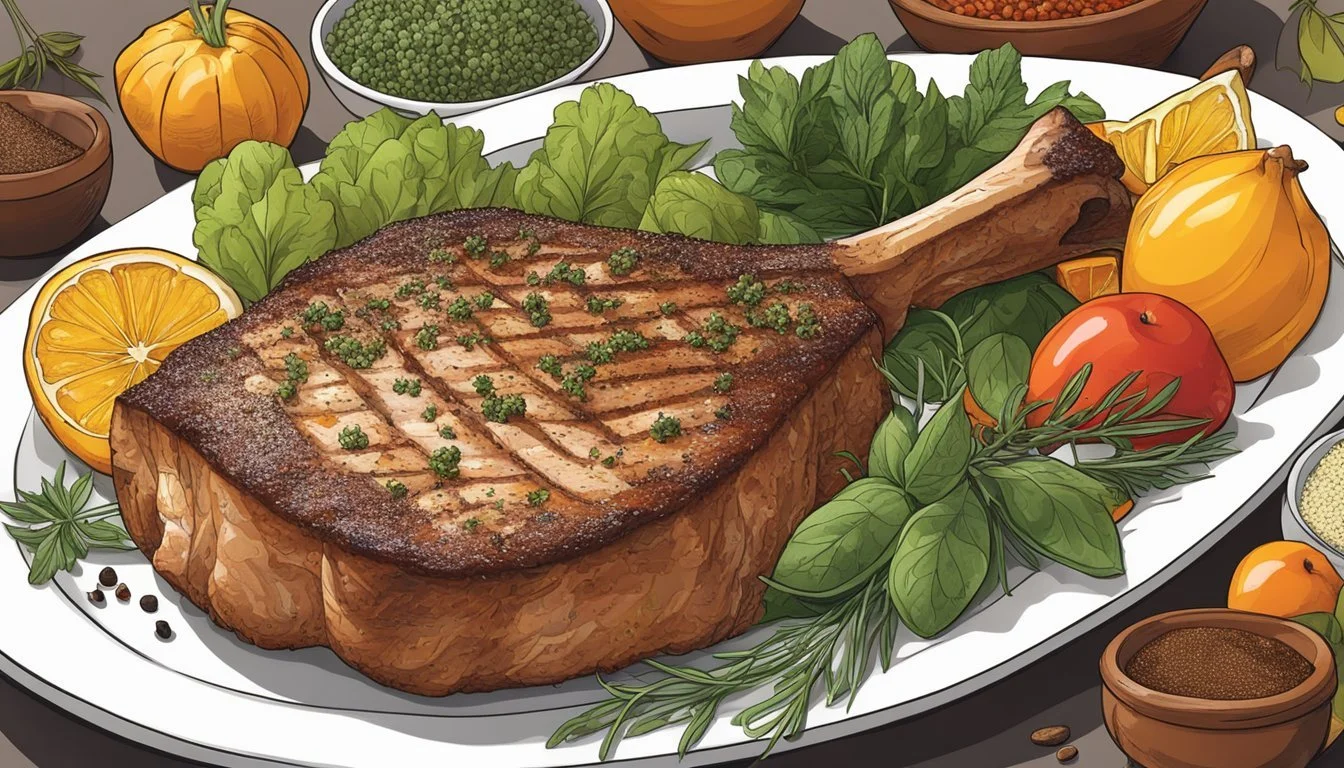Pork Chops Substitutes
Best Alternatives for a Delicious Meal
Pork chops are a favorite for their delicious flavor and versatile options in the kitchen. Sometimes, though, you might want or need to find a substitute. Chicken thighs or chicken breasts can be excellent alternatives, offering similar texture and the ability to absorb various seasonings well. This makes them highly adaptable to a wide variety of recipes.
Turkey cutlets or turkey breasts also work wonders as pork chop substitutes. Their slightly different flavor profile can bring a new dimension to familiar dishes. Similar to chicken, turkey pairs well with an array of seasonings, easily fitting into recipes that originally call for pork chops.
For those seeking a plant-based option, seitan is an admirable choice. Known for its firm and chewy texture, seitan can mimic the meaty consistency of pork chops while being high in protein. Easily seasoned and cooked in multiple ways, it offers a healthy and satisfying alternative.
Understanding Pork Chops
Pork chops are a popular type of meat known for their flavor and versatility in cooking. This section covers their nutritional content, various culinary uses, and how to choose the right cut for your needs.
Nutritional Profile
Pork chops provide a rich source of protein, essential nutrients, and minerals. Protein is abundant, aiding muscle repair and growth. They also offer iron and zinc, both crucial for various bodily functions. However, pork chops contain saturated fat and cholesterol, which should be consumed in moderation. The amount of fat varies by cut, with pork loin being leaner than pork shoulder.
Pork chops also contain vitamins B6 and B12, essential for energy production and maintaining nerve health. They can be a healthy part of a balanced diet when chosen and cooked appropriately.
Culinary Uses
Pork chops are versatile in the kitchen, suitable for various cooking methods like grilling, roasting, and pan-frying. Seasoning and marinades enhance their flavor. Boneless pork chops cook faster and are ideal for quick meals, while bone-in chops often retain moisture better.
Common recipes include stuffed pork chops and barbecue pork chops. Using a meat thermometer ensures they reach a safe internal temperature of 145°F, keeping the meat juicy and safe to eat.
Choosing the Right Cut
Selecting the right cut affects the flavor and cooking method. Pork loin and pork tenderloin are leaner, making them suitable for grilling and pan-frying. Pork steaks, usually cut from the shoulder, are fattier and better for slow cooking methods like braising.
Bone-in cuts like rib chops and sirloin chops offer robust flavor and are great for grilling or roasting. Boneless center-cut chops are versatile and easier to cook with shorter cooking times. Each cut has unique attributes, so choosing the correct one depends on the desired flavor, texture, and cooking method.
Alternatives to Pork Chops
Pork chop substitutes can be chosen based on the desired texture, flavor, and dietary preferences. Common alternatives include various chicken cuts, beef and other meats, and plant-based options.
Chicken-Based Substitutes
Chicken Breasts
Chicken breasts are a versatile and readily available substitute for pork chops. They offer a leaner option with a mild flavor that can be enhanced with marinades and seasonings. When cooking, chicken breasts can be seared, baked, or grilled, replicating the feel of pork chops in many recipes. Pro Tip: Use garlic powder and Italian seasoning to enhance flavor.
Chicken Thighs
Chicken thighs provide a richer, juicier option compared to breasts and can mimic the tender and flavorful experience of pork chops. They can be boneless or bone-in and are ideal for slow cooking or searing in a pan. Chicken thighs tend to remain moist and are a great choice for recipes requiring longer cooking times.
Beef and Other Meats
Beef Brisket
Beef brisket, known for its tough texture when raw, becomes tender and flavorful after slow cooking. It's an excellent alternative for recipes that usually require a longer cooking process, similar to pork butt or shoulder cut.
Pork Steaks
Pork steaks, cut from the shoulder, provide a similar texture and flavor to pork chops. They are marbled with fat, ensuring they remain succulent and flavorful when cooked. They can be grilled, pan-fried, or slow-cooked, making them a versatile choice.
Turkey Cutlets
Turkey cutlets or turkey breast offer a lean and subtle-tasting alternative to pork chops. They cook quickly and can be used in a variety of dishes. The texture is firm yet tender, and turkey cutlets can be seared or baked, depending on your recipe requirements.
Plant-Based Options
Tempeh
Tempeh is a fermented soybean product with a firm texture and nutty flavor, making it a nutritious and satisfying pork chop substitute. It absorbs marinades well and can be grilled, pan-fried, or used in stir-fries.
Seitan
Seitan, also known as wheat gluten, offers a chewy texture and ability to mimic meat flavors, making it an excellent plant-based substitute. It can be seasoned and cooked in various ways, including grilling and frying.
Tofu
Tofu provides a softer texture compared to tempeh or seitan but can be made firmer through pressing. It is versatile and can absorb various flavors, making it suitable for many recipes. Tofu can be baked, grilled, or stir-fried to replace pork chops in many dishes.
Meat Substitutes for Vegans and Vegetarians
Plant-based pork chop substitutes can deliver the flavors and textures needed for a satisfying meal. Options like tofu and tempeh, seitan and jackfruit, and various mushroom varieties each offer unique qualities.
Tofu and Tempeh
Tofu and tempeh are versatile soy-based protein sources suitable for replicating pork.
Tofu, or bean curd, has a mild flavor and firm texture that absorbs marinades and spices well. It's excellent in stir-fries, salads, and fried rice. Removing excess water before cooking helps it soak up flavors more effectively.
Tempeh offers a nutty taste and firmer texture. Its dense structure makes it suitable for grilling and frying. Marinating tempeh enhances its ability to replicate the rich, savory aspects of pork dishes.
Seitan and Jackfruit
Seitan, made from wheat gluten, has a chewy texture akin to meat. It's rich in protein and can be seasoned with spices to mimic the flavors of traditional pork.
Jackfruit, a tropical fruit, has a fibrous texture that works well as a pulled pork substitute.
When unripe, it has a neutral taste, allowing it to absorb marinades and sauces. Cooking it with spices like cumin, coriander, and chili powder enhances its pork-like flavor.
Mushroom Varieties
Various mushrooms, including shiitake and chanterelle, provide excellent meat alternatives due to their texture and umami-rich flavors.
Shiitake mushrooms offer a meaty quality and can be grilled or sautéed. Their natural umami enhances the taste of dishes.
Chanterelle mushrooms, with a delicate yet firm texture, can replicate certain pork dishes. They pair well with tangy gravies and spices, making them suitable for recipes like vegan carnitas.
Seasoning Alternatives
Exploring different seasonings for pork chop substitutes can significantly enhance the flavors of the dish. Proper spices, herbs, and marinades play a crucial role in achieving a delicious result.
Herbs and Spices
Using a blend of herbs and spices can elevate the taste of any pork chop substitute. Garlic powder and onion powder add a robust base flavor. Adding paprika contributes a smoky sweetness, while cumin brings an earthy, slightly spicy tone.
Italian seasoning can be a versatile mix, often containing basil, oregano, rosemary, and thyme. This combination infuses the meat with rich, aromatic flavors. Additionally, experimenting with marinades that include these ingredients can make the substitutes even more flavorful.
Lists, tables, or formatted text like bold and italic can help emphasize important aspects of these seasoning options.
Cooking Methods for Substitutes
Different substitutes for pork chops can be prepared using various cooking techniques. Knowing the right methods ensures delicious and correctly cooked meals whether you’re using chicken, turkey, tempeh, or seitan.
Dry Heat Methods
Grilling is an excellent way to cook alternatives like chicken thighs, turkey cutlets, and tempeh. Preheat the grill to medium-high heat, then cook the meat or meat substitute until it reaches a safe internal temperature. For instance, chicken and turkey should reach 165°F (74°C), while tempeh can be grilled until it has a crispy exterior.
Roasting is another effective technique. Chicken breasts and turkey breasts can be roasted in the oven at 375°F (190°C) until fully cooked. Use a meat thermometer to ensure doneness. Tempeh can also be oven-roasted, gaining a rich flavor and firm texture.
Baking works well for dishes like breaded chicken cutlets or marinated seitan. Place the items on a baking sheet and bake at 350°F (175°C) until they are cooked through and have a golden-brown exterior.
Moist Heat Methods
Braising is suitable for tougher cuts or dense substitutes like seitan. Start by searing the meat or substitute in a hot pan, then add liquid (such as broth or wine) and cook covered at a low simmer until tender. This method is particularly good for ensuring that meats like turkey or seitan absorb flavors deeply.
Stewing is another moist heat method where chicken thighs or turkey pieces are immersed in liquid and cooked slowly.
Slow-cooking combines elements of braising and stewing. Chicken thighs, tempeh, and seitan can be added to a slow cooker with your choice of liquids and seasonings. Cooking at a low setting for several hours ensures tender and flavorful results.
Side Dishes to Pair with Substitutes
Pairing the right side dishes with pork chop substitutes, such as grilled chicken or tofu, enhances the meal experience by complementing the main dish's texture and flavors. Starch-focused and vegetable-based sides are versatile and can highlight the unique qualities of these substitutes.
Starch-Focused Sides
Mashed Potatoes are an excellent choice. Creamy and smooth, they provide a comforting texture that balances well with the tender chew of grilled chicken or the firm bite of baked tofu. For a twist, garlic mashed potatoes introduce a robust flavor.
Couscous is another versatile option. Its light and fluffy texture suits a wide range of pork substitutes. Incorporating herbs like parsley and smoked paprika can elevate its taste, making it an affordable and flavorful side.
Wild Rice pairs well with pork chop substitutes. Its chewy texture and nutty flavor create a substantial base that contrasts nicely with milder proteins like tofu or chicken. Adding cranberries or almonds offers a sweet and crunchy element.
Vegetable-Based Sides
Maple-Bacon Brussels Sprouts bring a rich, smoky taste to the table. The combination of crisp Brussels sprouts with the sweetness of maple syrup and the savory depth of bacon complements the flavors of grilled chicken or baked tofu.
Roasted Vegetables, including carrots, bell peppers, and zucchini, provide a colorful and nutritious side. Roasting caramelizes the natural sugars, enhancing the sweetness and adding a slight char that pairs perfectly with almost any pork chop substitute.
Apple Cranberry Pecan Salad is a refreshing choice. The crisp apples, chewy cranberries, and buttery pecans offer diverse textures and flavors. This light fall salad works well with the savory nature of chicken or tofu dishes.
Each side dish offers a unique combination of textures and flavors, enhancing the overall dining experience when paired with pork chop substitutes.






